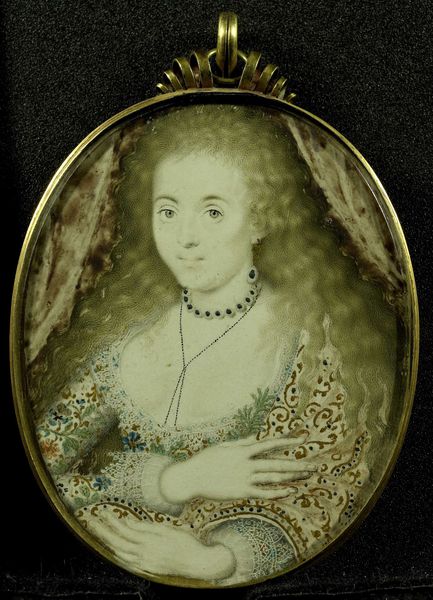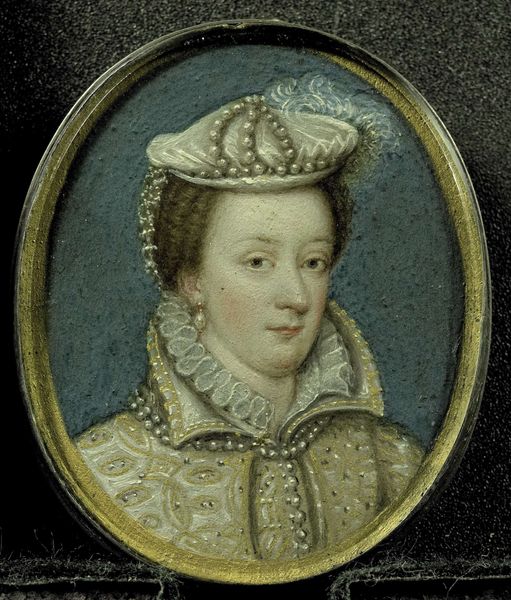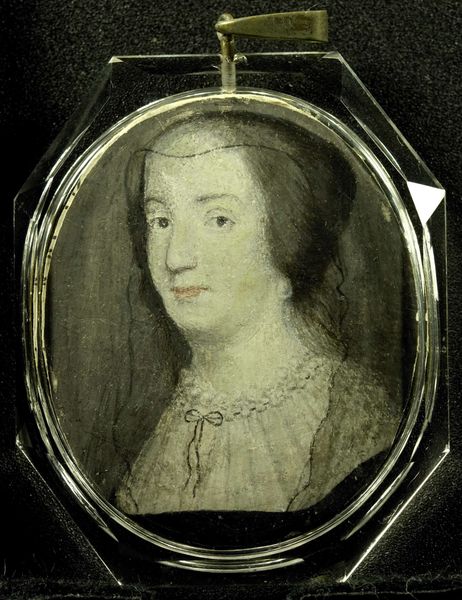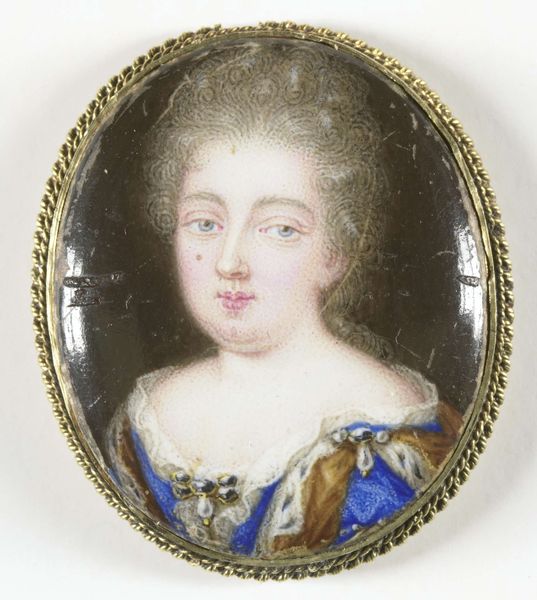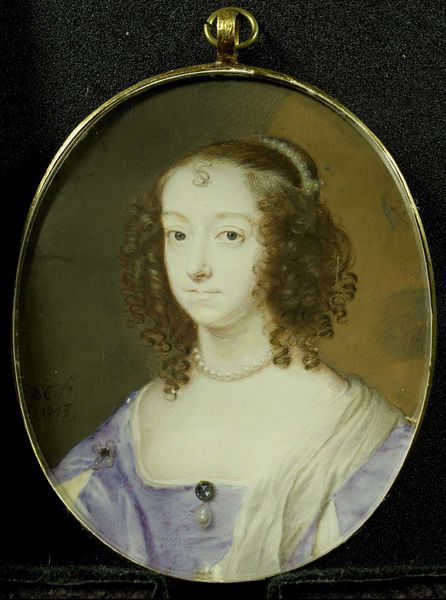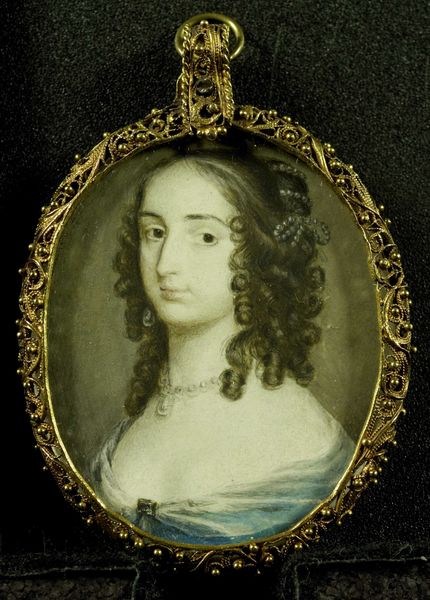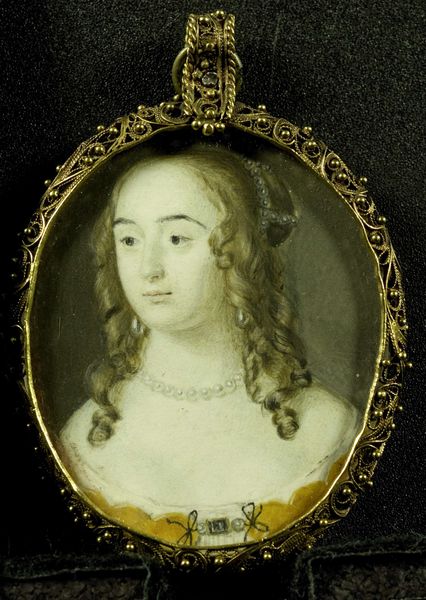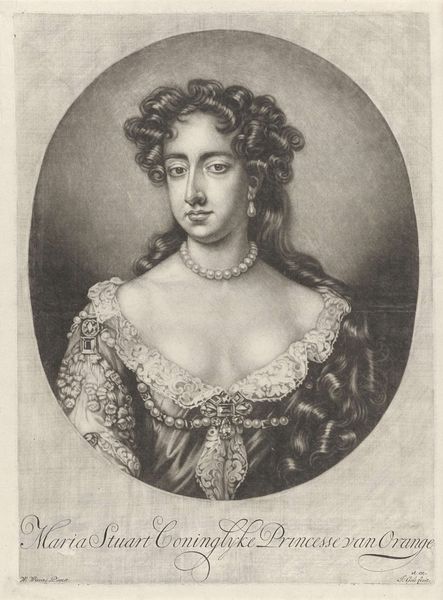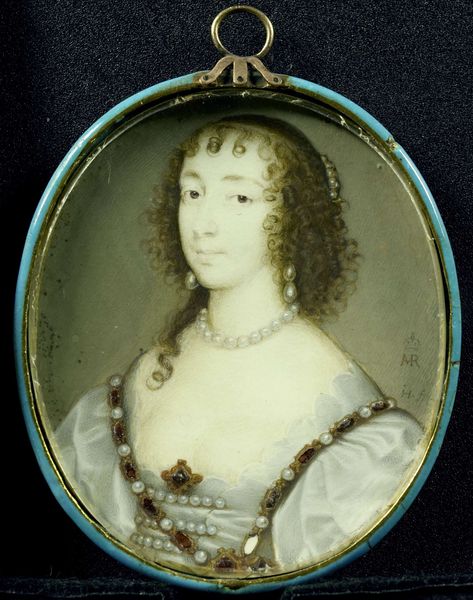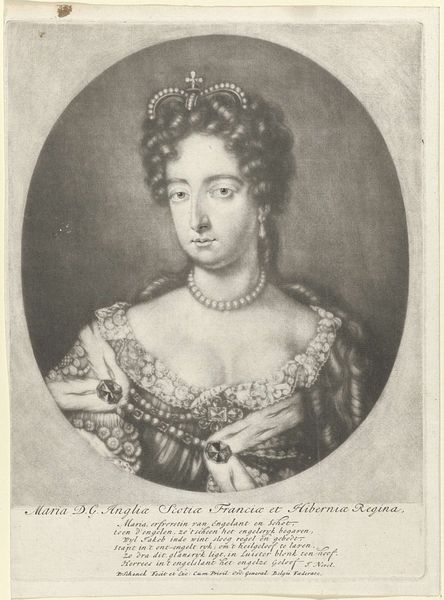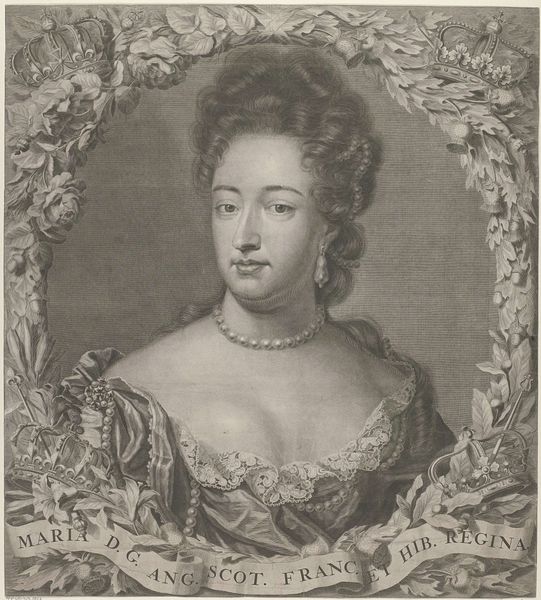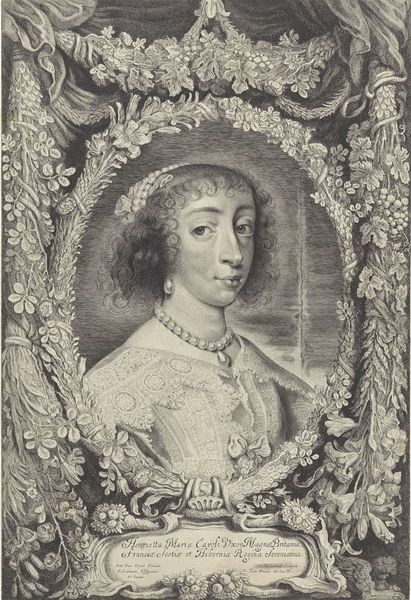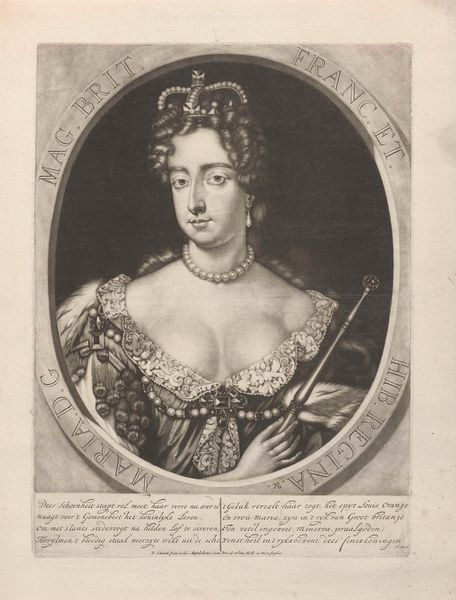
Henriëtte Maria van Frankrijk (1609-1669). Echtgenote van Karel I van Engeland 1620 - 1664
0:00
0:00
painting, oil-paint
#
portrait
#
baroque
#
painting
#
oil-paint
#
academic-art
#
miniature
Dimensions: height 6.2 cm, width 5.1 cm, height 7.7 cm, width 5.2 cm, depth 0.8 cm
Copyright: Rijks Museum: Open Domain
Editor: Here we have a miniature portrait, "Henriëtte Maria van Frankrijk," painted between 1620 and 1664 by John Hoskins. The oil paint gives her skin a porcelain-like quality, almost untouchable. What can you tell me about this portrayal of Henrietta Maria? Curator: This portrait encapsulates so much about the construction of royal identity and female power during that era. Consider the historical context: Henrietta Maria was Queen consort during a period of intense political and religious upheaval in England. How might her image, especially through portraiture like this miniature, have functioned as a tool for constructing a certain kind of political narrative, especially during conflict with Parliament? Editor: I see your point. Her expression seems carefully neutral, almost like a mask. Was she trying to project strength, or perhaps conceal something? Curator: Precisely! And look closer – the elaborate lace collar, the jewelry. These are not just decorative elements; they're coded markers of wealth, status, and lineage. These were tools for the monarch's image-building. They present her as powerful but also ornamental. And, knowing her tumultuous political life, could this opulent display also be read as a form of defiance or even resistance against the growing Puritanical sentiment that saw such adornment as excessive and sinful? Editor: So the painting becomes a battleground of identity, reflecting these power struggles! I hadn’t considered the societal critique embedded within the portrait itself. Curator: Exactly. Analyzing portraits, especially of women of power like Henrietta Maria, invites us to interrogate the layers of performance, politics, and social commentary encoded within these images. What do we learn about power dynamics by examining the portrait in relationship to feminist theories? Editor: This definitely makes me rethink portraiture beyond just surface-level beauty. Thank you. Curator: Indeed! The surface of the artwork is where broader narratives concerning gender, class, and authority often converge.
Comments
No comments
Be the first to comment and join the conversation on the ultimate creative platform.
